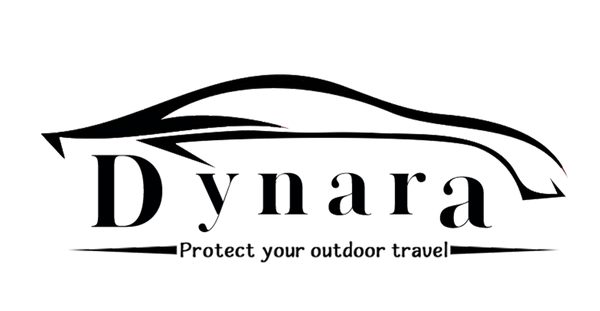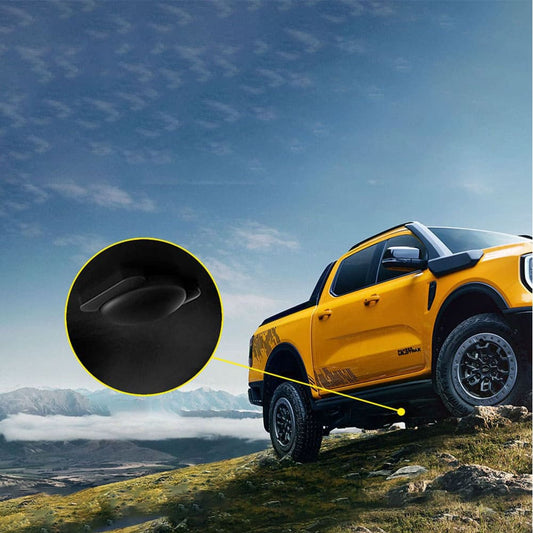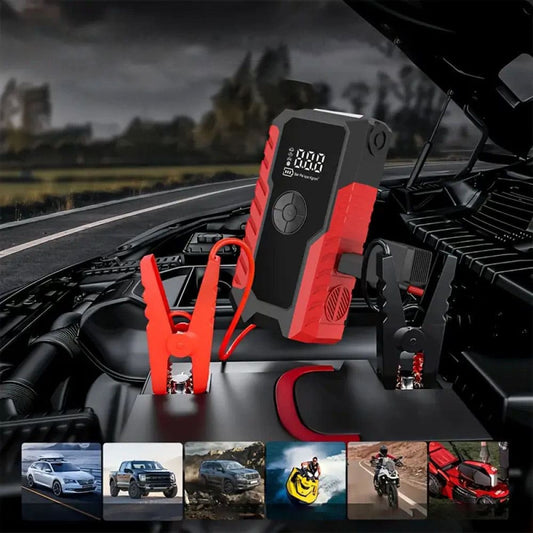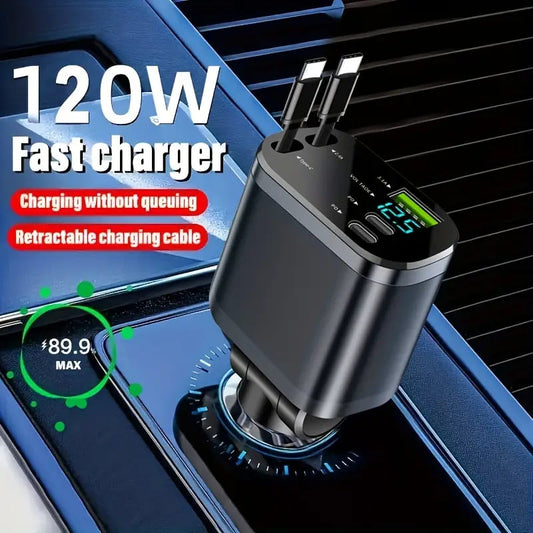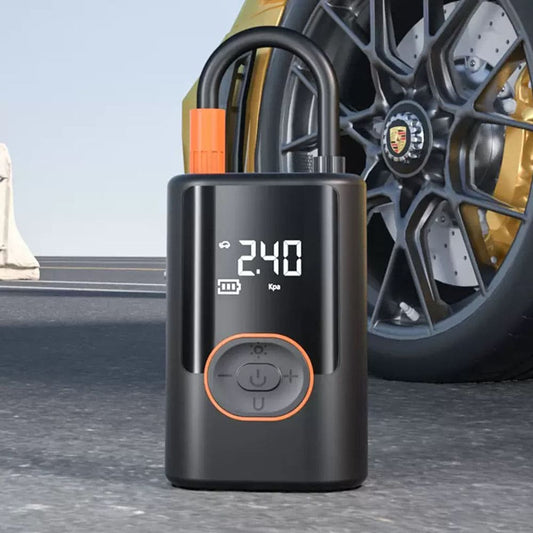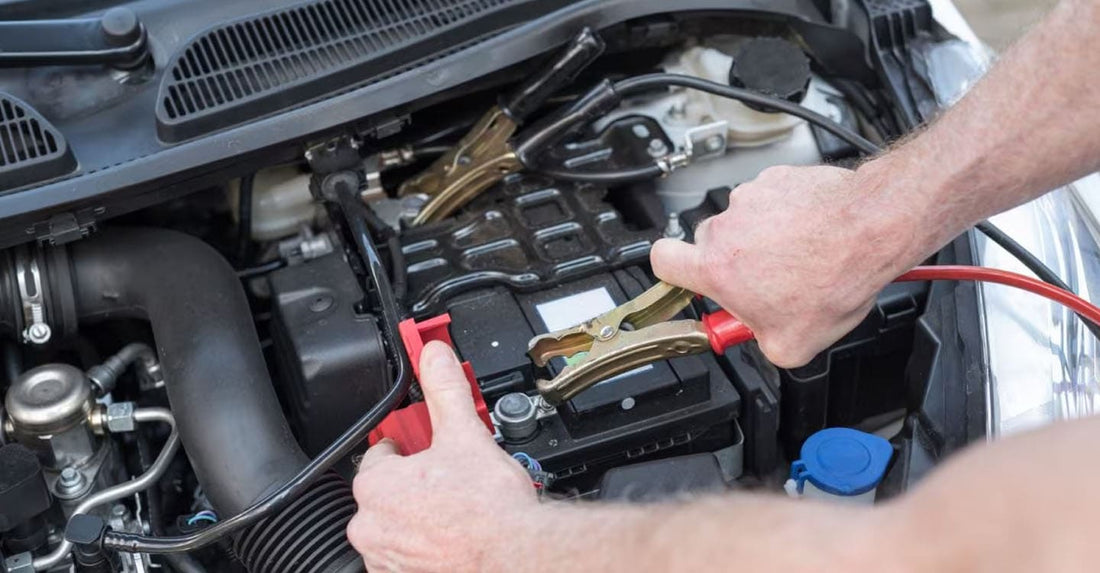
How to Jump Start a Car: Easy Guide & Dynara Portable Jump Starter Solution
Share
A car refusing to start often happens at the worst time—when you’re late for work, stuck in the rain, or far from home. In most cases, the culprit is a dead car battery. While calling for roadside assistance is one option, knowing how to jump start your car can save both time and money.
Let’s look at the safest way to do it, along with a smarter alternative that every driver should consider.
1. Park the vehicle with a good battery in front of the one that needs a jump start. Turn off the ignition and apply the parking brakes on both cars.
2. Open the hoods, locate the batteries, and remove the terminal covers if necessary.
3. Identify the positive and negative terminals, then connect the jumper cables in order:
Red clamp → Positive (+) terminal of the dead battery
Other red clamp → Positive (+) terminal of the good battery
Black clamp → Negative (–) terminal of the good battery
Other black clamp → An unpainted metal surface (or grounding bolt) on the engine of the dead vehicle
4. Start the engine of the vehicle with the good battery, then try to start the dead vehicle.
5. Once the dead vehicle starts, disconnect the cables in reverse order.
6. Keep the vehicle running and drive for at least 20 minutes to allow the alternator to recharge the battery.

Step 1: Position the Vehicles Correctly
When your car battery is dead, park a vehicle with a healthy battery close enough so that the jumper cables can reach both batteries. The cars may be parked side by side or front to front.
Most car batteries are located under the hood, but in some vehicles they may be in the trunk or beneath the rear seat. If you’re unsure, check the vehicle owner’s manual for the exact location.
Before moving on, make sure both ignitions are turned off, keys removed, and parking brakes engaged. Also switch off accessories such as headlights, radio, and air conditioning to prevent electrical surges.
MORE: Car Warranty Guide: What You Need to Know for Your Vehicle Protection
Step 2: Locate and Inspect the Battery Terminals
Open the hood to find the battery terminals. Every battery has two posts: positive (+) and negative (–). The positive terminal often has a red cover, while the negative is typically uncovered or marked with a minus symbol.
If corrosion is present (white or green deposits), clean it with a wire brush or tool before attaching cables. Avoid direct skin contact, as battery residue can cause irritation.
Safety Warning: Never attempt a jump start if the battery case is cracked, leaking, or visibly damaged.

Step 3: Connect the Jumper Cables in the Right Order
Jumper cables come with a red clamp (positive) and a black clamp (negative). Connect them carefully in this order:
1. Red clamp → Positive terminal of the dead battery
2. Other red clamp → Positive terminal of the working battery
3. Black clamp → Negative terminal of the good battery
4. Other black clamp → An unpainted metal surface (grounding point) on the engine block of the car with the dead battery
⚠️ Important: Make sure clamps never touch each other while attached to the batteries, as this could cause sparks or damage.

MORE: Tested: The Best Portable Jump Starters of 2025
Step 4: Start the Cars
Check that the cables are away from moving engine parts. Then start the engine of the car with the good battery first. After it’s running, try to start the car with the dead battery.
If it doesn’t start immediately, wait a few minutes to let the dead battery charge. Increasing the RPM of the booster vehicle may speed up the process.
💡 Tip: Wondering if it’s safe to jump start a car in the rain? Yes—it is safe. A car battery voltage is not high enough to create extra danger in wet weather compared to dry conditions.

Step 5: Disconnect the Jumper Cables Safely
Once the dead car starts, remove the cables in the reverse order:
-
Black clamp from the dead car
-
Black clamp from the booster car
-
Red clamp from the booster car
-
Red clamp from the dead car
Disconnecting in the wrong order could cause sparks or electrical surges that may damage sensitive components.

Step 6: Keep the Engine Running
Leave the newly started car running and drive for at least 20 minutes to allow the alternator to recharge the battery. If the vehicle struggles to start again afterward, the battery may be failing and should be tested or replaced. Many auto parts stores offer free battery testing.
MORE: Car Tires Guide: Everything You Need to Know
Why Your Car Won’t Start with a Jump
Check the Jumper Cables
Loose or corroded clamps can prevent a successful jump. Make sure connections are secure and battery terminals are clean.
Give It Time
A deeply discharged battery may need a few minutes to build enough charge. Let the booster car run and try again.
Battery Problems
Old or damaged batteries may not take a jump. If your car won’t start, replacing the battery might be necessary.
Electrical Issues
If lights and radio work but the engine doesn’t crank, a blown fuse or faulty ignition switch could be the cause.
Starter Failure
Clicking noises when trying to start often indicate a bad starter. This may need replacement.
Selecting the Right Jumper Cables
Using the proper jumper cables is essential for a successful jump start. Investing in reliable booster cables ensures efficient power transfer and reduces the risk of damage. When shopping for cables, keep these points in mind:
Low Gauge, Thick Wire: Lower gauge numbers mean thicker cables with better conductivity. For most cars, 4-gauge or 6-gauge cables are ideal. Avoid thin 10-gauge cables, as they may not handle enough current.
Copper Wiring: Solid copper cables provide the best conductivity. Copper-clad aluminum (CCA) is a cost-effective alternative. Pure aluminum cables should be avoided due to poor electrical flow.
Durable Clamps: Choose clamps with solid copper coating or full copper for reliable connection. Strong teeth and springs ensure a secure grip on battery terminals.
Visible Polarity: Clear markings—red for positive (+) and black for negative (–)—help prevent connection mistakes.
Sufficient Length: 16–20 feet allows flexibility in positioning vehicles for a safe jump.
Quality Insulation: Thick, flexible rubber or PVC insulation prevents cracking, especially in cold weather.
Storage Solution: A sturdy bag keeps cables organized and protected, ready for emergencies.
MORE: Enhance Your Driving Experience with the Wireless Car Tire Inflator
Jump Starting a Car When Keyless Entry Fails
A dead battery can prevent your key fob from unlocking the car doors. Most key fobs include a hidden physical key for emergencies. In some models, the key slot is concealed behind a cover near the door handle. Accessing the emergency key varies by vehicle make and model.
If you cannot locate the key slot or unlock the door manually, roadside assistance may be required to open the vehicle and jump start the car safely.
Jump-Starting a Motorcycle with a Car
It is possible to jump-start a motorcycle using a car, but there are some precautions. Both the motorcycle and car batteries must be 12-volt with negative grounding. The size difference between the batteries does not matter.
Tips for safety:
Prefer using motorcycle-specific jumper cables, as car cables have large clamps that are harder to attach securely to a motorcycle battery.
Follow the jumper cable connection procedure in your motorcycle’s manual to prevent sparks.
Once the motorcycle starts, have the battery tested to ensure it holds a proper charge.
Jump-Starting Hybrid Vehicles
Hybrid cars have a standard 12-volt battery for electronics and a larger high-voltage battery that powers the motor. Many manufacturers place the 12-volt auxiliary battery or jump-start tabs in non-traditional locations, such as inside the fuse box under the hood.
Key points:
Always refer to the owner’s manual for the exact location of the jump-start connection.
The process for jump-starting a hybrid’s 12-volt battery is similar to a conventional gasoline vehicle.
Jump-Starting Electric Vehicles (EVs)
Electric vehicles also use a 12-volt battery to power electronics while the car is off. If this battery is drained, the vehicle may need a jump to operate.
Important:
You cannot jump-start an EV using another EV, even if they are the same brand. The 12-volt system is not designed to charge another vehicle.
Use a gasoline-powered car or a portable jump starter specifically designed for EVs when the 12-volt battery is dead.
A Smarter Alternative: Dynara Portable Jump Starter
Traditional jumper cables only work if another car is nearby. But what if you’re stranded on a quiet road or late at night? That’s where the Dynara Portable Jump Starter changes the game.
Powerful enough to start most gas and diesel cars
Compact and easy to store in the glove box
Safe design with spark-proof technology
Bonus: can charge your phone or laptop in emergencies
Carrying one means you’ll never have to rely on a stranger’s car battery again. Many drivers describe it as a “must-have tool” for road trips and daily commutes alike.
Final Thoughts
Knowing how to jump start a car is an essential skill for any driver. With the right steps, you can handle a dead battery safely and confidently. However, for complete peace of mind, investing in a Dynara portable jump starter ensures you’re never left stranded—no matter the time, place, or weather.
